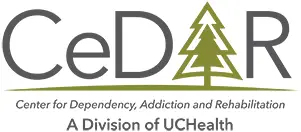MINDFULNESS
You have a number of options for breathing to settle down your nervous system. Now, you can add some useful tricks to enhance your mindfulness relaxation experience. One of these exercises is called mindful muscle relaxation. It involves cycles of flexing and releasing muscle groups, sequentially up your body. This experience functions both as a body scan, in that it forces you to imagine your muscles in a visually present way, and it can be considered a brief physical exercise. The isometric tone of your muscle groups helps to release lactic acid build-up and improve your sense of calmness.
Demonstration
This exercise can take an estimated 3-5 minutes depending on how many repetitions you do. As with any mindfulness relaxation exercise, it can be useful to set time aside, plan out what you intend to do, and arrange things to be as distraction-free as you can. Although mindfulness efforts can be done anywhere, at any time, it is often nice to practice without too much interference.
Step 1: Start with Breathing
Starting with breathing helps you center yourself and set up a mindful state. You can use square breathing or another breathing method you enjoy. Complete some full breaths for up to 1 minute with your eyes closed. Keep this going until you feel more in touch with your physical state. Focus on breathing in through your nose and out through your mouth. When you exhale, purse your lips as if you’re blowing through a straw or trying to push a sheet of paper across your kitchen table. This pursed effect creates resistance in your lungs, effectively slowing you down. When your breathing slows down on the exhale portion, your nervous system settles down slightly.
At this time, try and identify a part of your body you seem to be noticing, especially if it involves tension or pain. Stay present with that part and try to avoid judging it as bad or broken. For instance, acknowledge pain as a signal from your body, not the state of your body having a problem. The same is true about achiness, fatigue, or tension. Treat these as your body talking to you rather than your body ‘not working.’
Step 2: Be mindful of your current posture
Mindful muscle work requires good posture. Avoid crossing your knees or slouching. If you tend to have less-than-stellar posture, be mindful of how forcing yourself to have good seated posture feels. For some people, this even creates lower-back aches. Good posture improves your breathing function as it expands your rib cage and your lung capacity.
Step 3: Start with Your Toes and Move up
For the core of this exercise, you’re going to flex muscle groups as you inhale and relax those same muscles when you exhale. Repeat this twice for each group, emphasizing a visual imagery that you are actually blowing toxins out of those groups when you exhale. Some muscle groups to work through include:
- Toes
- Thighs
- Stomach / Abs
- Biceps
- Fists
- Shoulders
- Facial Muscles
Flex and relax each of these groups two times, and then repeat the whole sequence if you like. Continue to breathe in a deep fashion, inhaling through your nose and exhaling through your mouth. As you breathe in, tense the muscles and hold them. This should briefly increase your anxiety, but the anxiety quickly lifts when you blow out the tension. Even though the majority of mindful muscle relaxation is through imagery and staying present, there actually is some functional benefit in lactic acid excretion from the muscles. That lactic acid buildup prevents muscle growth and leads to fatigue.
Step 4: Finish Up with a Few Breathing Cycles
Center yourself, open your eyes and return to the room with a few cycles of deep breathing. Take note of how you feel at the present moment. This is a good example of a practical mindfulness exercise in which you maintain a fair amount of activity. The attention paid to your muscle groups, visualizing them, and continuing your breathing represents true mindfulness.
There are other exercise blends which combine meditative breathing and muscle work. This example is easy to do quickly, has the right amount of distraction to stay focused on each body part, and works well in decreasing your stress. Try it yourself and see! A daily commitment to an exercise such as this can go a long way for anxiety reduction, baseline physical health, and relapse prevention techniques.
